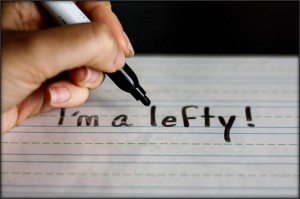I had planned to write on a completely different topic this month. It was reasonably current, and in the context of the day when it first crossed my mind, seemed arguably important. I will probably come back to it next month, or maybe the month after, and by then it might be a little less topical, but I suspect it will seem more important than it would today. There can be no doubt that the senseless slaughter of 49 people and the life-altering wounding of 53 others is the worst kind of elephant in the room.
Less than 72 hours after the tragic events in Orlando, the narrative is already shifting moment by moment as both heartfelt advocates and political opportunists try to claim the massacre as the cri du coeur for their particular cause. Like virtually every other mass shooting, the motivations and contributing factors in this incident have enough ambiguity to support the demonization of almost any modern social or cultural failing. Islamic terrorism? The shooter made 9-1-1 calls suggesting that he was acting in the name of ISIS. But then again, only a few years earlier, he had informed co-workers of his allegiance to both Shia-led Hezbollah and its sworn Sunni enemy ISIS. If he was truly Jihad inspired, he was at best a poorly-informed adherent. Mental health system failures? His first wife alludes to bipolar disorder. Homophobia? It would be impossible to believe that the location for the rampage was selected randomly. But even here, the easy trope initially provided by his father of a derangement prompted when the shooter and his young son witnessed two men kissing is being insidiously displaced as evidence emerges of a history of frequenting Pulse Nightclub beyond what one would expect of one casing the club for an attack. Gun control failings? The AK-15 used in the attack is a weapon that no one can make a reasonable argument has any relevance to use for personal protection, sport or hunting, and can be acquired in Florida from any gun dealer without any waiting period.
With all of this available fodder, the debate will now swirl around WHICH cause can rightfully claim this tragedy. Would tighter gun control laws have prevented or at least reduced the body count resulting from this tragedy? Critics will point out the availability of kettle bombs and other homemade instruments of mass slaughter that could have been employed by one so inclined. Are the staunchly heterosexual normative views of Islam (and Catholicism and most fundamental branches of Christianity, for that matter) really the issue here if the attack was borne more of self-loathing than of a culturally-supported xenophobia? Would obligatory reporting and treatment of individuals exhibiting symptoms of mental health issues make us safer, or drive affected individuals to distance themselves from others who could possible lead them to voluntary treatment? Do tighter immigration policies to exclude immigration from Islamic nations have any real relevance to a crime committed by a US-born son of immigrant parents?
There will never be agreement on how this or any other attack like this could have been prevented, and it is probably true that we will never rid the world of these unthinkable tragedies. However, it is a second order failure of our humanity if we fail to acknowledge the following truths that are so apparent in the context of the Orlando carnage:
- That our families, faith groups and broader communities must redouble our efforts to eradicate any stigma around the LGBTQ community lest we provide even a hint of social license for the acts of those inclined by malice or illness toward either antipathy to such groups or a catastrophic self-loathing;
- That our society must remove any stigma to those seeking help with mental health challenges; and
- That the right of private citizens to bear arms must not extend to weapons that have a disproportionate suitability to offensive applications than to any personal protection, hunting or sporting requirements.
The world will never be without troubled minds, and some of those troubled minds will inevitably be inclined toward violence. The best we can do and the least we must do is to provide no easy targets or readily accessible means of inflicting mass harm.



